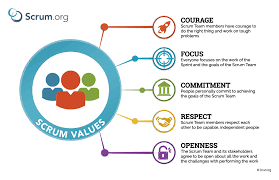Scrum Values
Welcome to Scrum Sutra — a series where I shall share a 3-min overview of each element of Scrum and how it connects with the other elements in the bead to form Scrum Sutra.
Today, I shall talk about Scrum Values.
“Successful use of Scrum depends on people becoming proficient in living five values.” — Scrum Guide 2020
Scrum as a framework has no prescribed rule for every interaction and collaboration within and outside the Scrum Team. It is intentionally done to allow individuals and teams to make their own decisions on how they would like to have their interactions, and processes to achieve higher productivity and better value delivery. In order to help the Scrum Team and Stakeholders make that effective decision, the Scrum Guide provides a set of values on which Scrum is based.


The Scrum Team and Stakeholders become proficient when they use the Scrum values for every decision they make. And then subject those decisions to empiricism — apply those experimentally, observe the results and draw conclusions.
“When your values are clear to you, making decisions becomes easier.” — Roy Disney
A great Scrum Team puts every action and decision of theirs to a litmus test: “Will this action move us closer to honoring our Scrum values or further away?” “If we make this decision, will we still be living the Scrum values?” A decision based on the Values may not be the easiest or the most enjoyable at that moment. But that discomfort will pass and what will remain is the internal feeling of rightness for a more fulfilling decision.
On the contrary, a decision made based on what is easier now, which will maintain status-quo will leave the team feel tensed. Hence, the Scrum Team need to be courageous to make decisions according to values.
“The bitterness of poor quality remains long after the sweetness of low price is forgotten.” — Benjamin Franklin
What values the Scrum Team honor show up in the choices they make in their day-to-day interaction and those choices are visible in the behavior they demonstrate.
Just walk past a Daily Scrum and you will notice the values they honor just by observing their behavior. As an example, you will see Developers being Respectful to each other’s inputs, being Open to demonstrate progress, Open to feedback, Open to ask for, and offer help, Open to inspect and adapt Sprint Plan toward the Sprint Goal, to be Courageous to hold each other accountable and to discuss impediments. All this to ensure their Commitment and Focus on the Sprint Goal.
Sprint Retrospective is a formal opportunity for the Scrum Team to look back over their various interactions and the decisions they’ve made and see where the Scrum values were honored or were ignored. As a Scrum Master this information is very valuable to you for value clarification and to help the team see an elephant in the room.
There is no specific order for Scrum Values, rather they form a constellation. So, while each Scrum Value has its own unique tone, when played together they create a unique harmony. When a Scrum Team and Stakeholders do not maintain that symphony, the discord can get so disturbing that it can become toxic.
An increase in proficiency in living the Scrum values allows for more effective events, more useful artifacts and accountabilities acted out more productively. All these factors foster trust, empirical process control and make the Scrum Team maximize value, reduce waste and manage risk.
That’s a 3-min overview on Scrum Values. Stay tuned to the next in the Scrum Sutra series.










